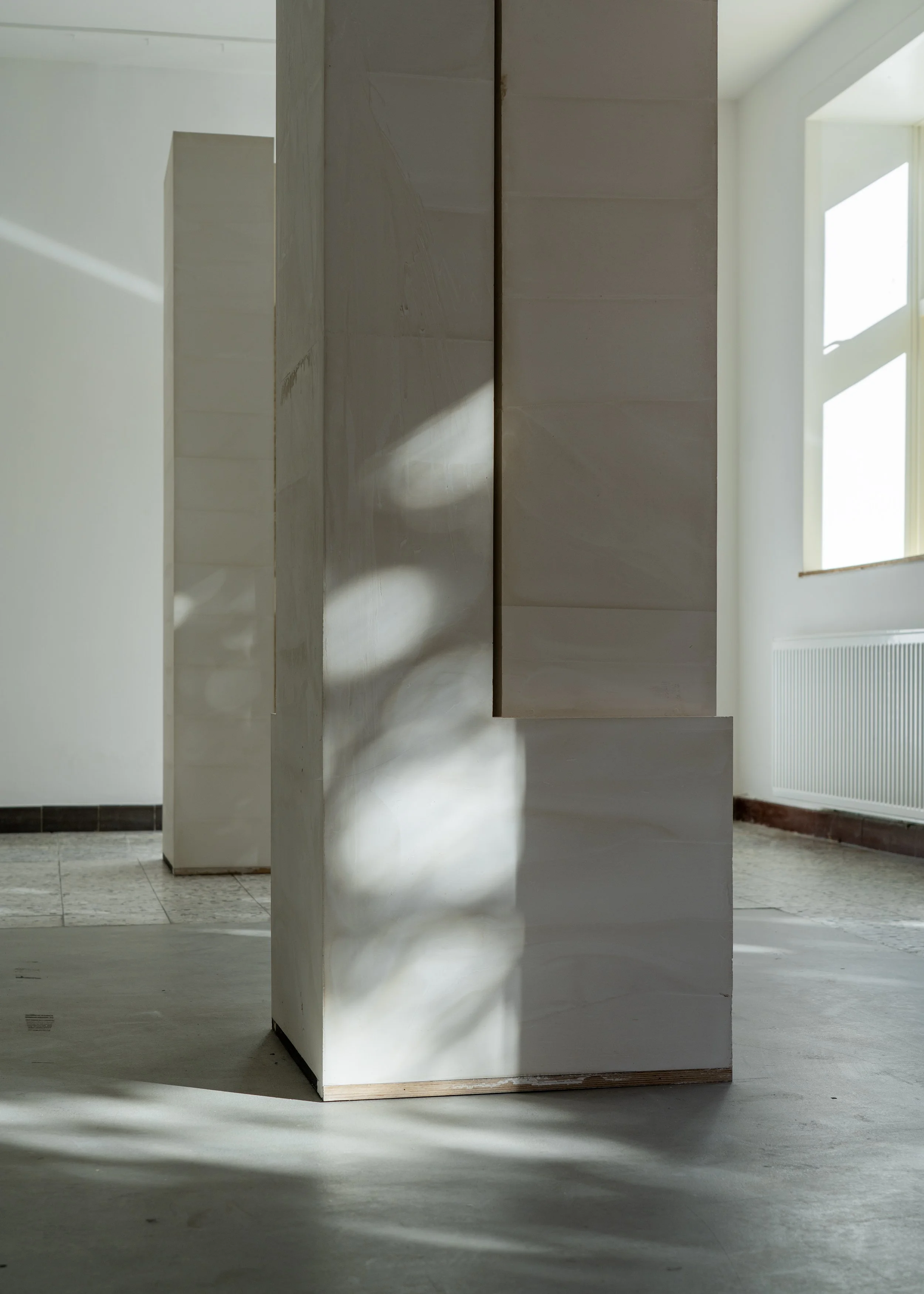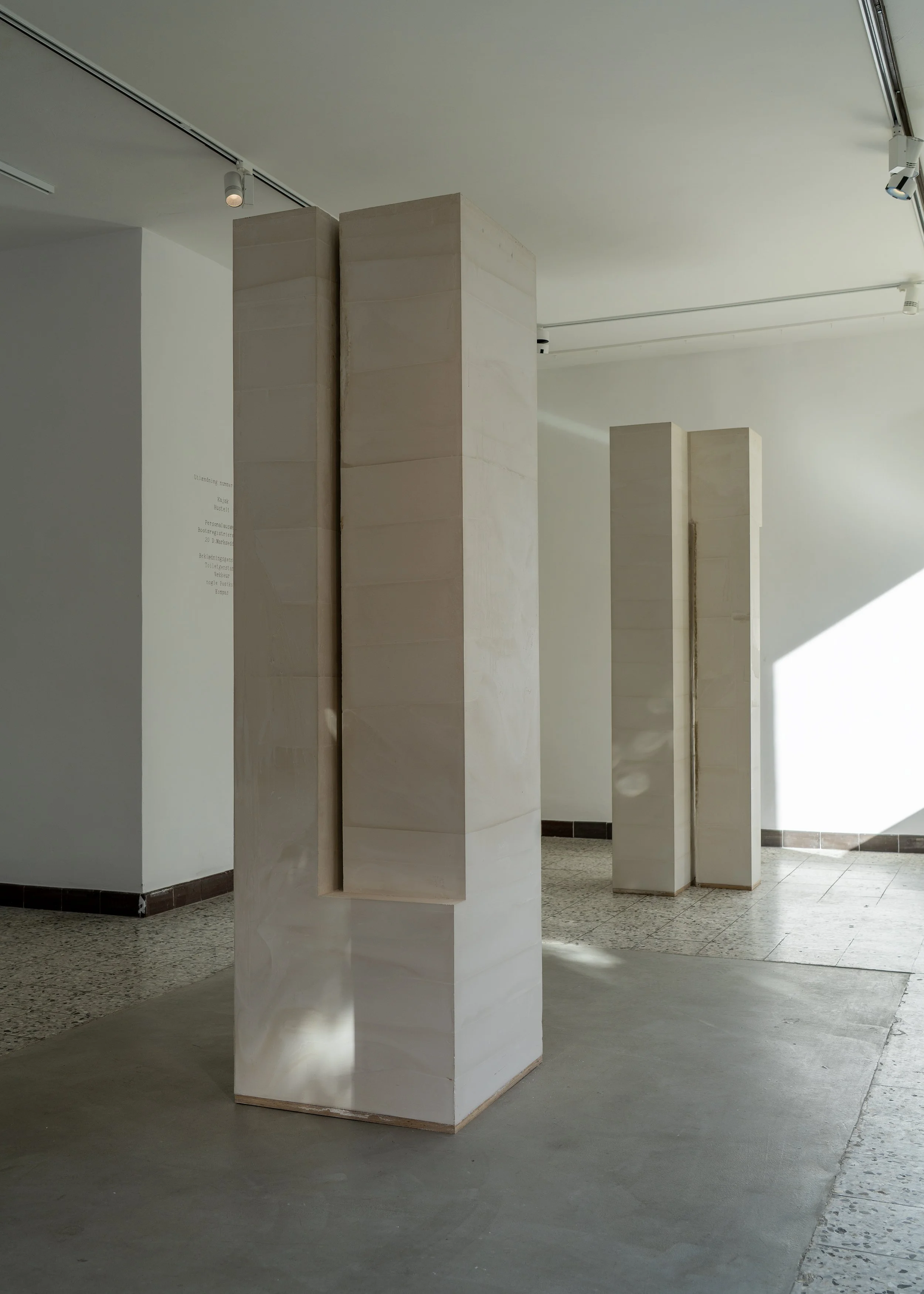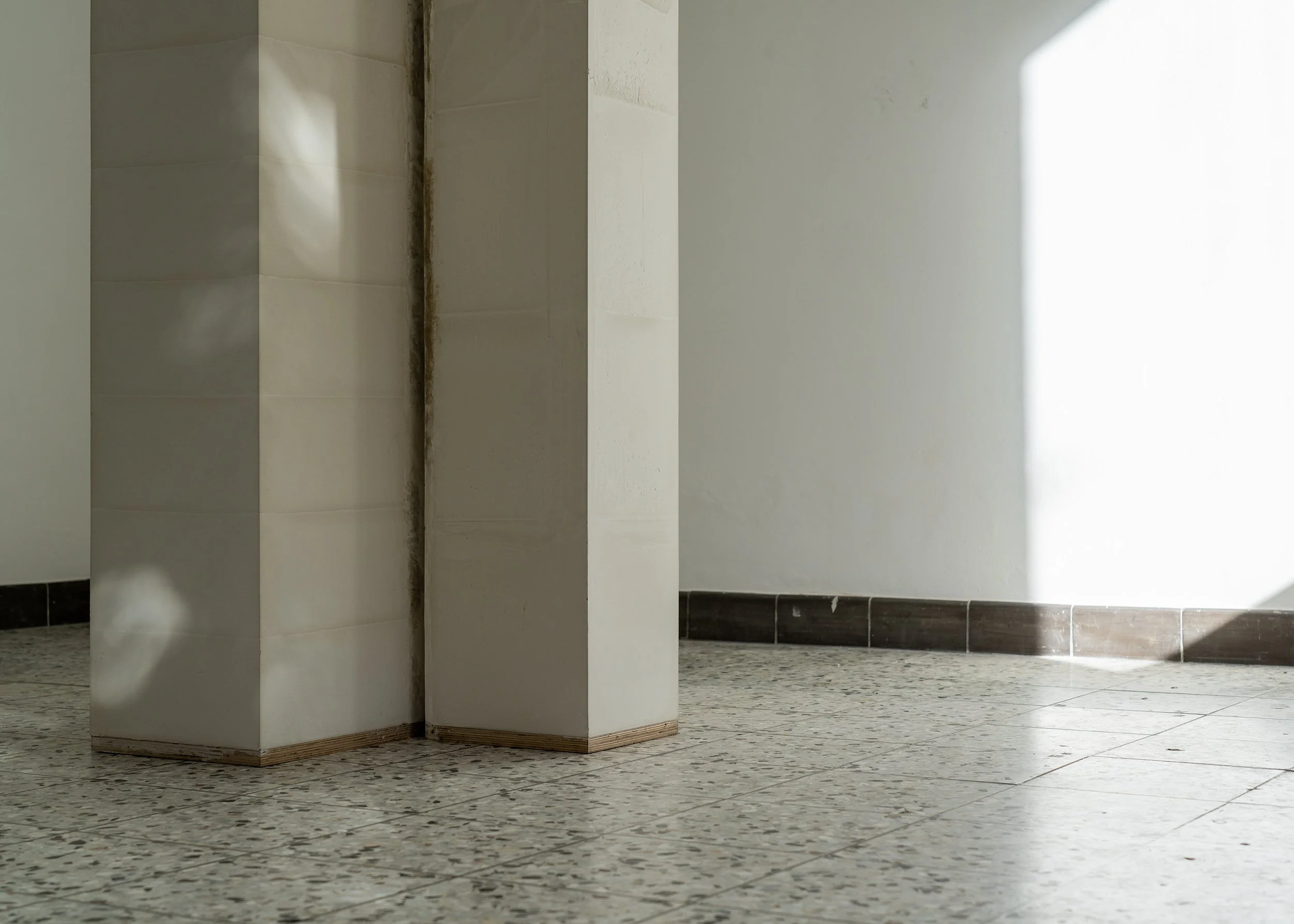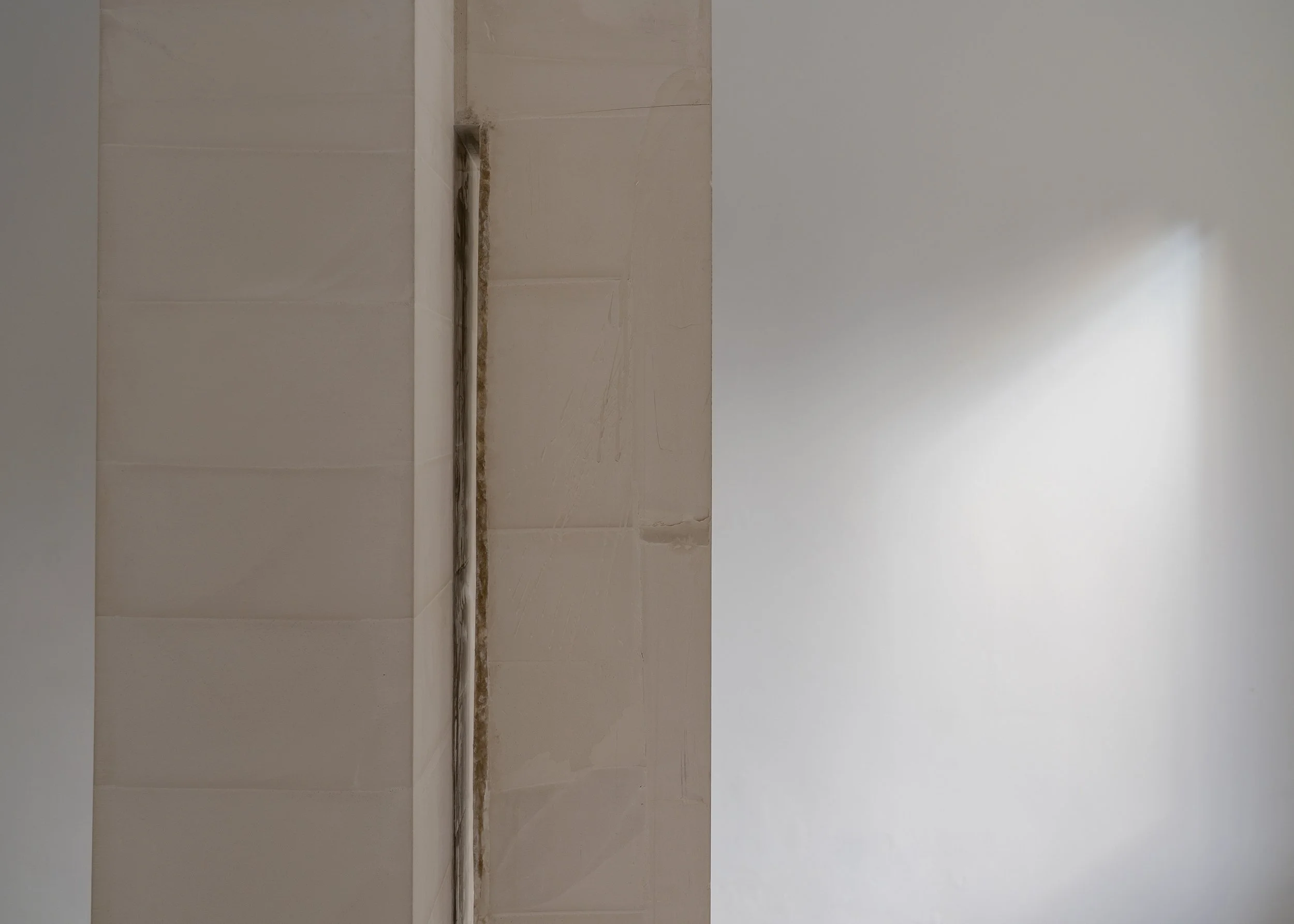Fragment
Petra Gipp’s work forms a bridge between an artistic approach and a practical execution, operating in the borderland between sculpture and architecture. Her central working method is casting—most often in plaster. Through this process, volume, elements, and details are shaped into a cohesive spatial expression. Whether serving as studies for built works or as independent sculptural pieces, Petra’s plaster works contain a unique poetry—both fragile and robust. The plaster pieces capture sunlight and materialize shadows, delicately evoking all the nuances of late summer light in the exhibition space on Willemoesgade.
Architecture constitutes the physical surroundings that reflect our culture, social structures, beliefs, and rituals. Through sensory experiences of light, sound, texture, and scent, it becomes embedded—starting from our earliest years—into the foundations of our memories and recollections. But what happens when one is torn away from that? From the familiar and meaning-bearing aspects of one’s surroundings? What structure does displacement take, and what remains within a person—and what form can it assume? How can we remember and speak about what has been lost?
With this project, Petra Gipp seeks to explore the complexity of migration—also as a contemporary phenomenon—through an artistic, sculptural process.
Taking her father’s escape from East Germany (the DDR) as a point of departure, Petra Gipp explores sculpturally how flight and displacement affect a person’s spatial identity—how the body experiences the loss of familiar spatial sensations. The overall project consists of two independent exhibitions: one at Landskrona Kunsthall (titled “DDR: Traces of Flight; in Landscape, Body, and Memory”) and another at TIL:VÆRKS. In each exhibition, the theme is examined through the specific physical spaces and contexts. The exhibition FRAGMENT comprises a series of new plaster castings, executed in a scale that relates to the human body and its physical surroundings. The sculptures are accompanied by film fragments and a sound work by Sole Gipp Ossler.
Through her exploration of how migration can affect a person’s spatial identity, Gipp gives physical form to her father’s escape. She studies how the loss of identity and belonging is inscribed in the body—through the process of crossing both mental and physical borders, and in the attempt to find a new identity in an unfamiliar place. Drawing on information from archives in East Germany, Russia, Denmark, and Sweden, Gipp has retraced her father’s journey. His footsteps lead to places that also bear the marks of other human destinies—thus weaving the personal and the collective together into a story with many voices and fates.
Where the footprints end, the casting begins—wordless, yet with a language and presence that can express what remains unsaid. The casts relate to space, light, and shadow; to sequence and dynamics; to the personal and the collective. In the minimal and precise installation, the voids and absences become a physical part of the work’s overall expression. Like human figures, the heavy sculptural bodies turn toward one another, accompany, and support each other—each fate both revealed and united in a shared human narrative.






